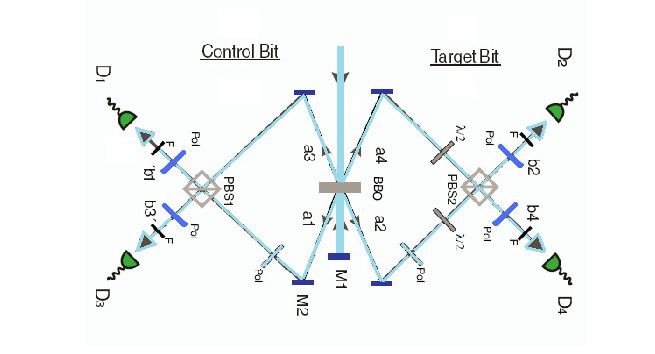 | ||
Optical or photonic computing uses photons produced by lasers or diodes for computation. For decades, photons have promised to allow a higher bandwidth than the electrons used in conventional computers.
Contents
- Optical components for binary digital computer
- Controversy
- Misconceptions challenges and prospects
- Photonic logic
- References
Most research projects focus on replacing current computer components with optical equivalents, resulting in an optical digital computer system processing binary data. This approach appears to offer the best short-term prospects for commercial optical computing, since optical components could be integrated into traditional computers to produce an optical-electronic hybrid. However, optoelectronic devices lose 30% of their energy converting electronic energy into photons and back; this conversion also slows the transmission of messages. All-optical computers eliminate the need for optical-electrical-optical (OEO) conversions, thus lessening the need for electrical power.
Application-specific devices, such as Synthetic aperture radar and optical correlators, have been designed to use the principles of optical computing. Correlators can be used, for example, to detect and track objects, and to classify serial time-domain optical data.
Optical components for binary digital computer
The fundamental building block of modern electronic computers is the transistor. To replace electronic components with optical ones, an equivalent optical transistor is required. This is achieved using materials with a non-linear refractive index. In particular, materials exist where the intensity of incoming light affects the intensity of the light transmitted through the material in a similar manner to the current response of a bipolar transistor. Such an 'optical transistor' can be used to create optical logic gates, which in turn are assembled into the higher level components of the computer's CPU. These will be non linear crystals used to manipulate light beams into controlling others.
Controversy
There are disagreements between researchers about the future capabilities of optical computers: will they be able to compete with semiconductor-based electronic computers on speed, power consumption, cost, and size? Critics note that real-world logic systems require "logic-level restoration, cascadability, fan-out and input–output isolation", all of which are currently provided by electronic transistors at low cost, low power, and high speed. For optical logic to be competitive beyond a few niche applications, major breakthroughs in non-linear optical device technology would be required, or perhaps a change in the nature of computing itself.
Misconceptions, challenges, and prospects
A significant challenge to optical computing is that computation is a nonlinear process in which multiple signals must interact. Light, which is an electromagnetic wave, can only interact with another electromagnetic wave in the presence of electrons in a material, and the strength of this interaction is much weaker for electromagnetic waves, such as light, than for the electronic signals in a conventional computer. This may result in the processing elements for an optical computer requiring more power and larger dimensions than those for a conventional electronic computer using transistors.
A further misconception is that since light can travel much faster than the drift velocity of electrons, and at frequencies measured in THz, optical transistors should be capable of extremely high frequencies. However, any electromagnetic wave must obey the transform limit, and therefore the rate at which an optical transistor can respond to a signal is still limited by its spectral bandwidth. However, in fiber optic communications, practical limits such as dispersion often constrain channels to bandwidths of 10s of GHz, only slightly better than many silicon transistors. Obtaining dramatically faster operation than electronic transistors would therefore require practical methods of transmitting ultrashort pulses down highly dispersive waveguides.
Photonic logic
Photonic logic is the use of photons (light) in logic gates (NOT, AND, OR, NAND, NOR, XOR, XNOR). Switching is obtained using nonlinear optical effects when two or more signals are combined.
Resonators are especially useful in photonic logic, since they allow a build-up of energy from constructive interference, thus enhancing optical nonlinear effects.
Other approaches currently being investigated include photonic logic at a molecular level, using photoluminescent chemicals. In a recent demonstration, Witlicki et al. performed logical operations using molecules and SERS.
